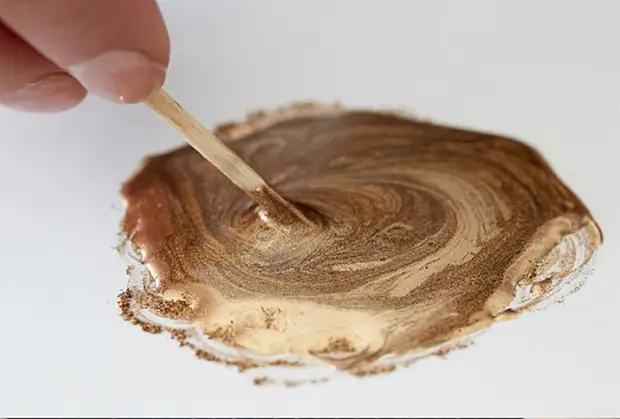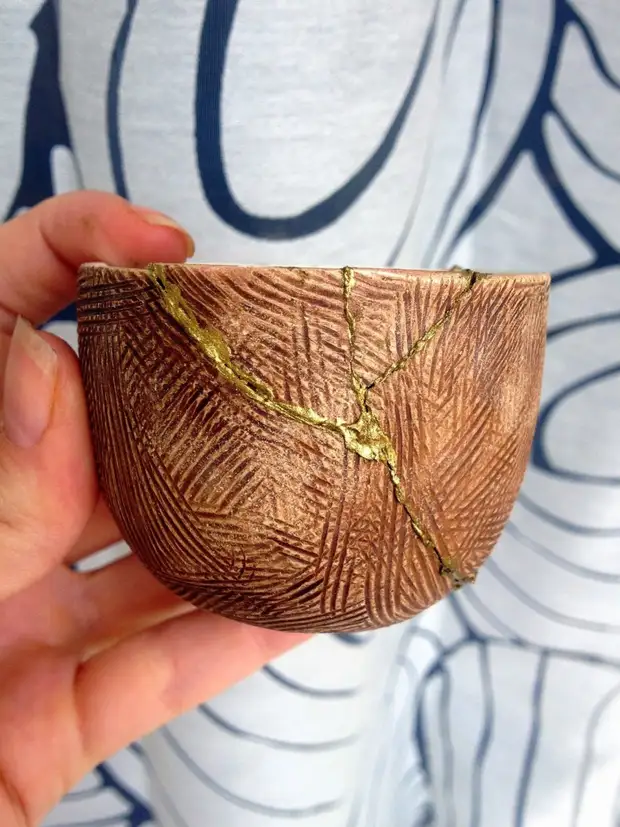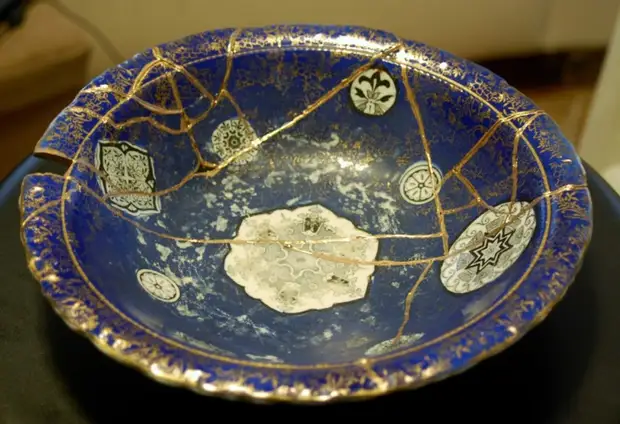
Nowadays, things that are broken or damaged simply throw out, for modern consumption culture gave us the opportunity to easily and simply acquire more for a smaller price. But the paradox is that in this way we have less and less valuable things that have their own history, their memories, their philosophy. Our modern world does not tolerate shortcomings. We praise youth, beauty and novelty. In pursuit of a dream, we sometimes try to hide our own mistakes, failures, drops and imperfections. And the art of Kintsugi carries the wisdom today, applicable not only to ceramic bowls, but also to human life.
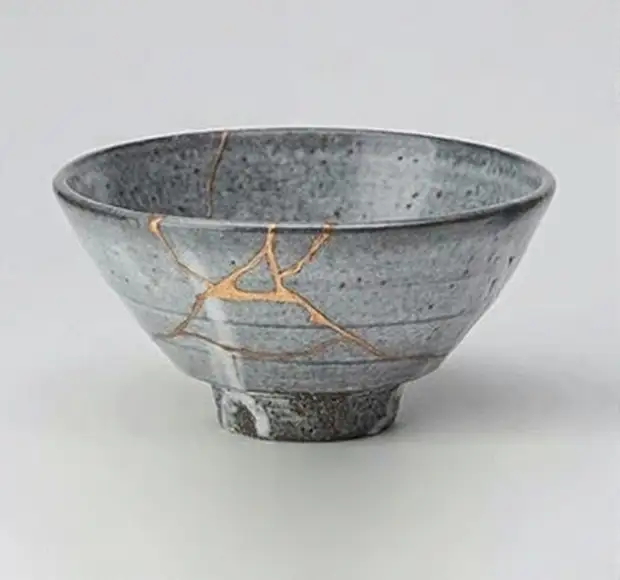
For many kintsugi - it is more than just the repair of dishes, this is a great way to learn how to live and experience everyday trouble. Be that of our cup or flaw in ourselves, it is necessary to take this imperfection, try to turn it for the better, but in no case Hold it, do not try to disguise. So what kind of art is it?
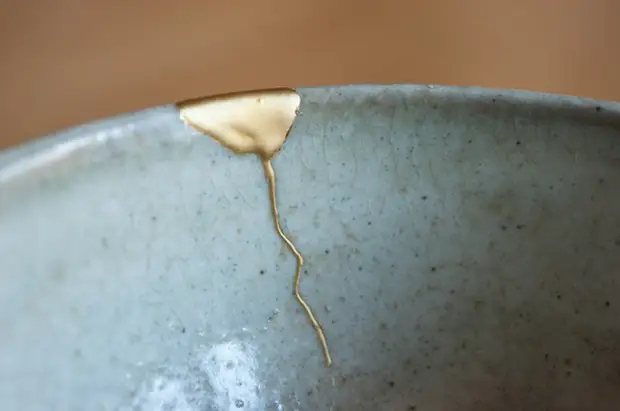
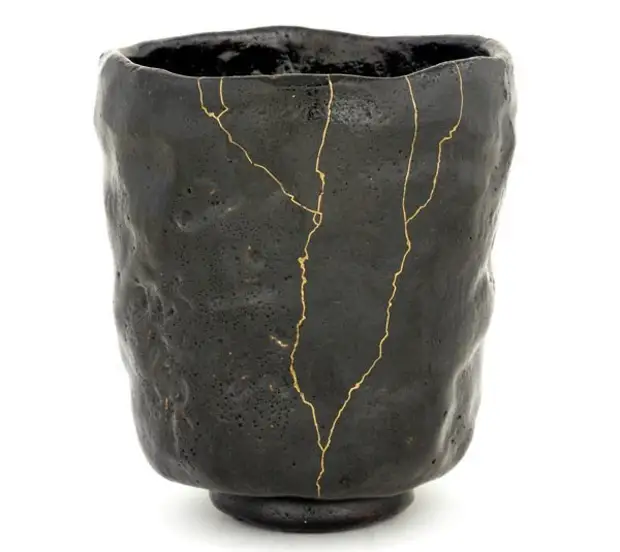
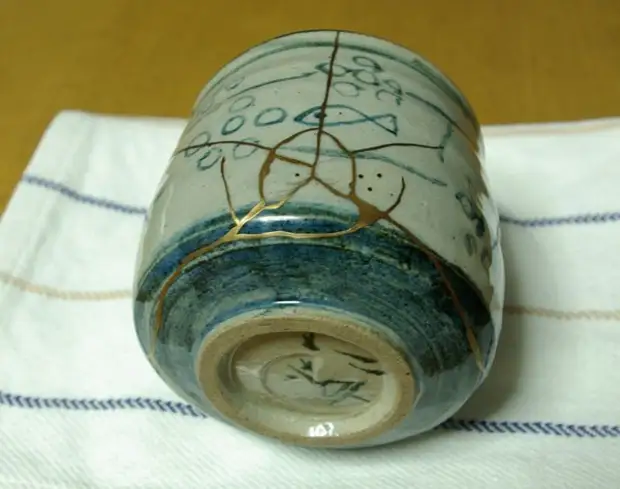
Kintsugi, or Kintsukour - Japanese art of restoration of ceramic products with a varnish mixed with gold, silver or platinum powder. The broken dishes glue, but the cracks do not mask, but on the contrary, each of them is emphasized. The art of Kintsigi arose in Japan of the XV century during the reign of Sögun Asikaga Yoshimasa.
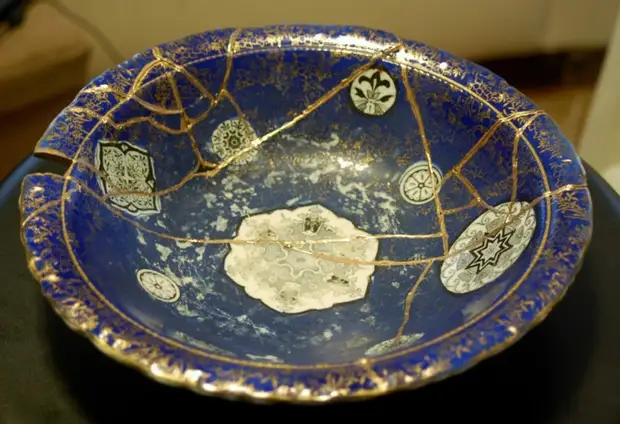
His reign was marked by the strong influence of the ideas of Zen Buddhism, as well as the growth of the aesthetics of Vabi-Sabi (elegance in simplicity, modest simplicity), and all Japanese culture as a whole. The whole state of artists, poets and artisans, Songun Asikaga Yoshimas, who gathered in his yard, popularized the tea ceremony of Chado, the art of arrangement of flowers of Iketibana, Sumi-E and dramaturgy's painting. Extreme honors and attention was awarded at the time Code of Samurai Beads.
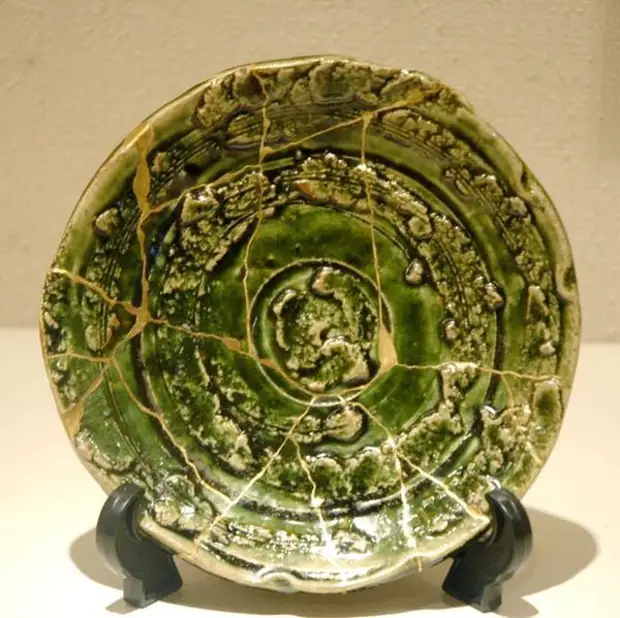
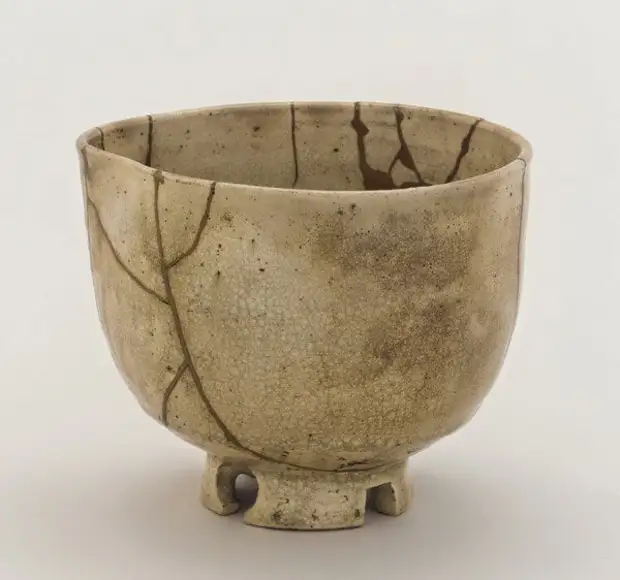
So, according to one of the versions, Asikaga Yoshimas broke his beloved tea bowl. He ordered to restore her, and the bowl was sent to China. The masters restored the bowl and returned her sigun, but it turned out that they joined the fragments of terrible large clips. Asicaga Yoshimas was dissatisfied with the work done and ordered Japanese masters to find a more aesthetic way to return the previous look. They not only connected fragments, but also turned the usual dishes in the subject of art using the film.
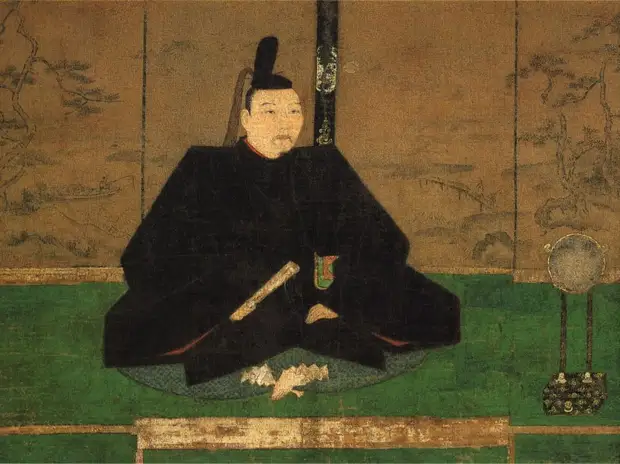
Not only new art was born, but also a new philosophy.
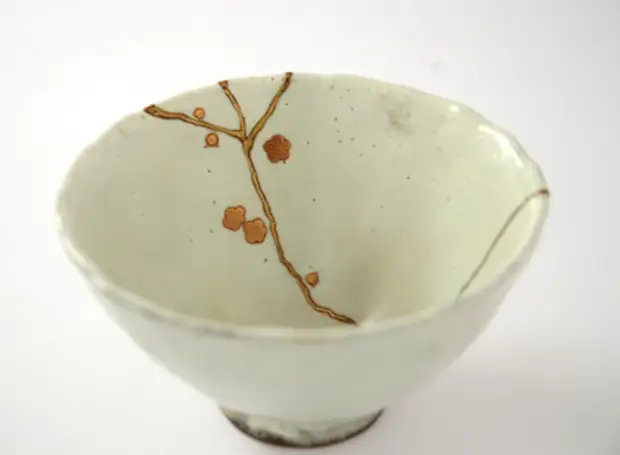
We are talking about the value of failures and failures. But at the same time, even if the next failure we could turn into success, we still try to forget about our shortcomings as soon as possible. But, meanwhile, many successful people admitted that they are proud of their dips, because in many respects thanks to them were able to gain happiness and succeed.
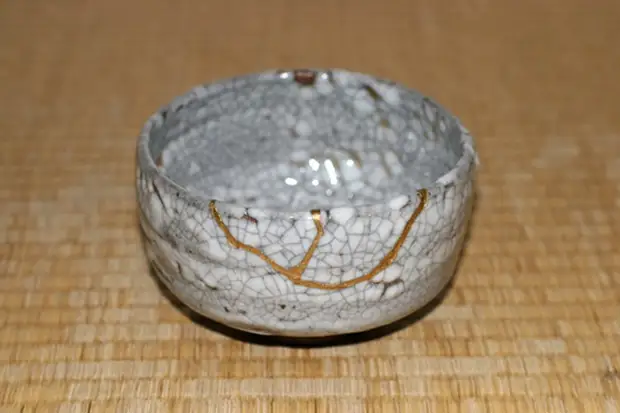
"Failure is a seasoning, which gives success to his fragrance."
Truman Hood, American Writer
"The force is based on failures, and not on success. I became strong when I sailed against the current. " Coco Chanel, french fashion designer
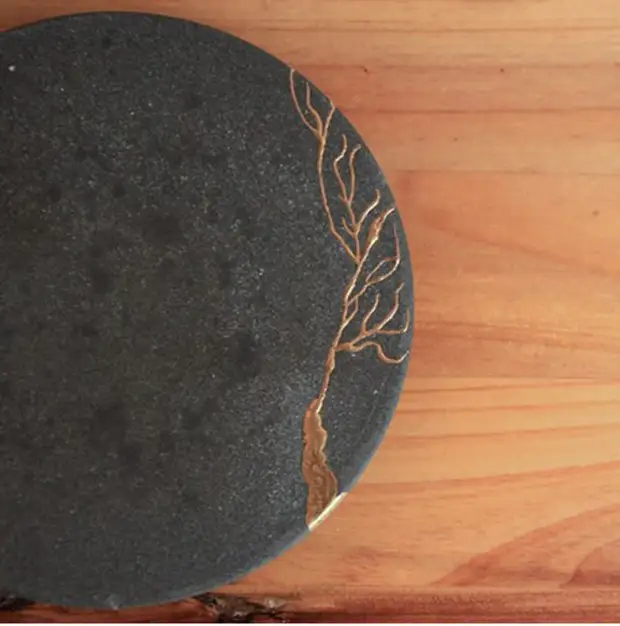
So kintsugi, instead of masking a breakdown and strive for an unattainable ideal, restores the broken object, aesthetically filling the damage to the special seam and while maintaining its own history of the object, the history of failures and failures, falls and life durability. And as a result, it turns out to create something more beautiful than the original. Modern Japanese aesthetics highly appreciates the details emphasizing the wear from the use of the subject, it breaks and cracks in it from the history of the object, and therefore do not deserve oblivion and disguise. From this point of view, Kintsigi wins both from the practical side, allowing you to continue to use the thing after its damage and with aesthetic, highlighting the cracks and traces of repair in the context of continuing, and not the end of her life.
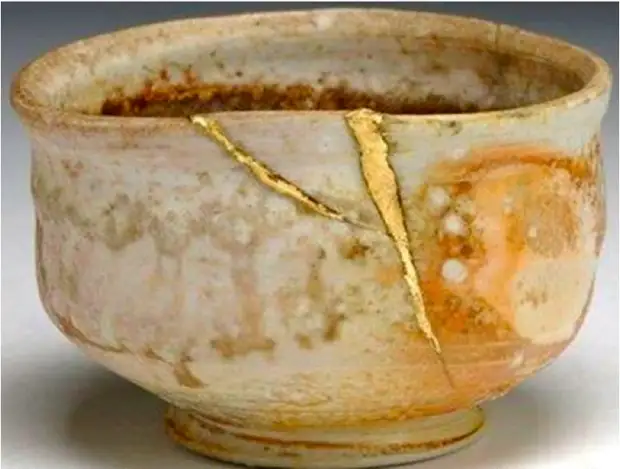
The original process meant the use of special varnish. The broken pieces were glued, using Urusha varnish, obtained from the juice of the Chinese varnish tree. The final layer of Urusha was covered with a gold powder and then polished. I must say that the collection of juice and processing of the product is quite dangerous due to its toxicity. Fortunately, as soon as the solution dries and strengthened, toxic effects are canceled, making the product is absolutely safe. Masters of Kintsugi use another method of connecting the shards, driving in them tiny holes and inserting gold brackets that fasten them together. This method allows you to make seams more noticeable, as you can notice in the picture below.
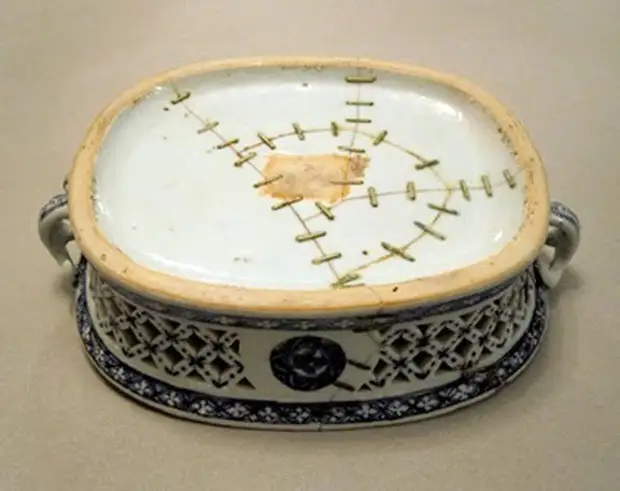
There are three main varieties of kintsugi:
- crack - the use of gold dust with a resin or varnish instead of glue with a minimum volume of missing parts;
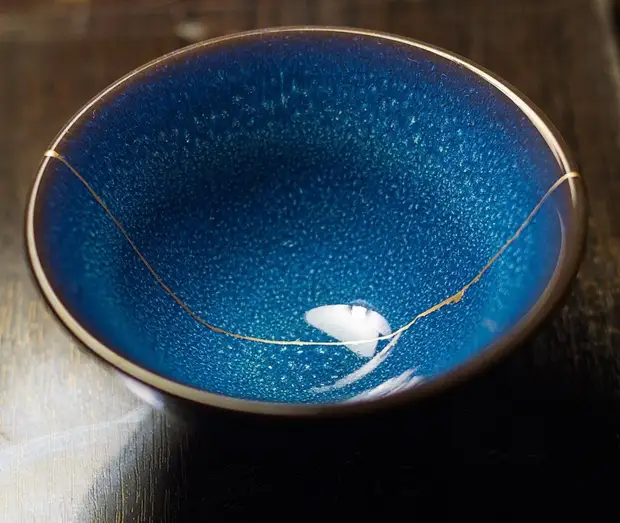
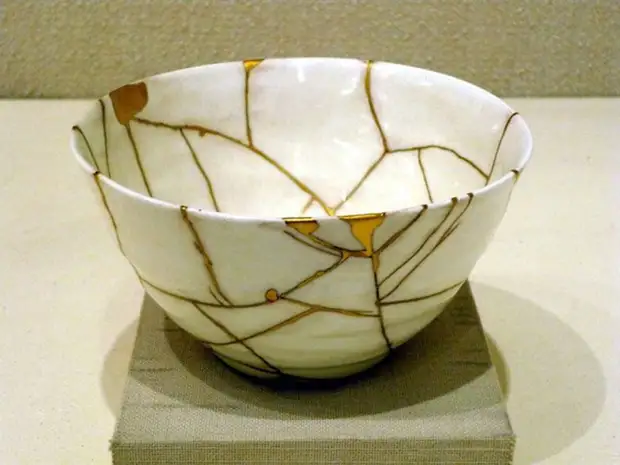
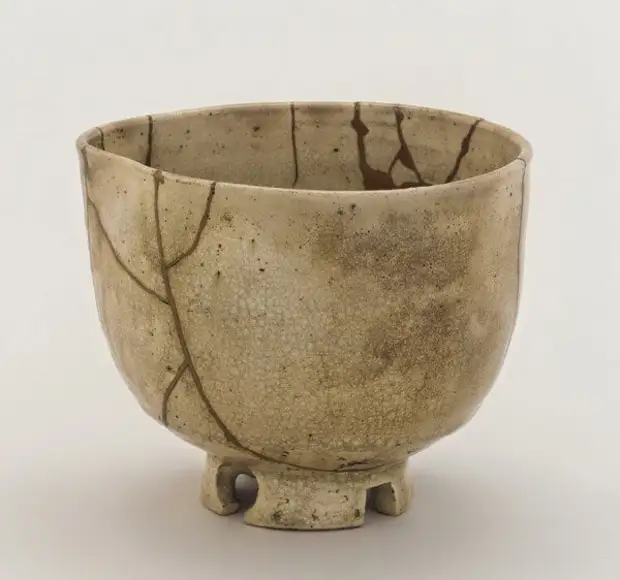
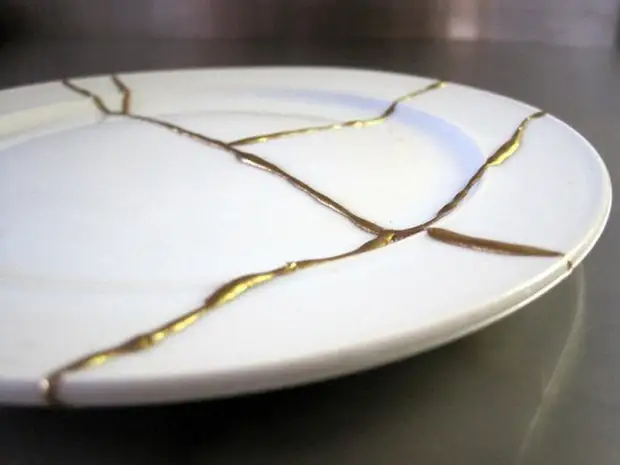
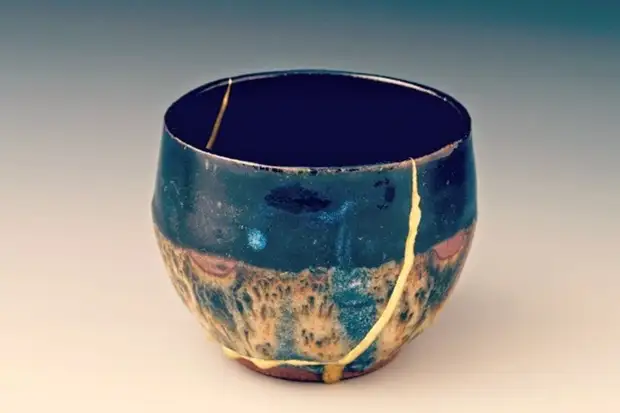
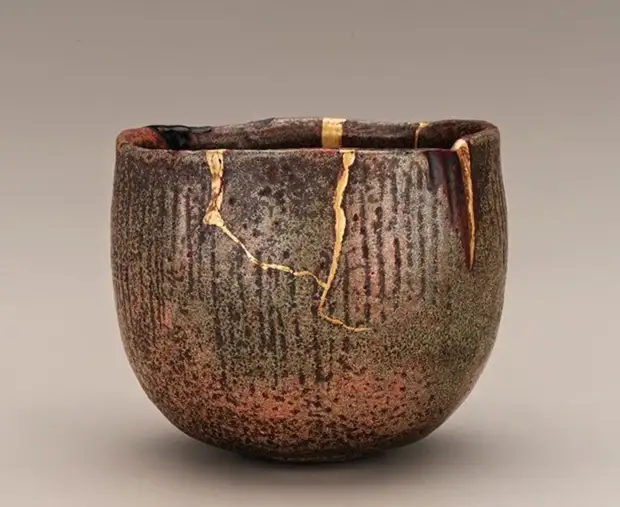
- Mosaic - literally "Filling missing fragments is performed by gold or gold enamel;
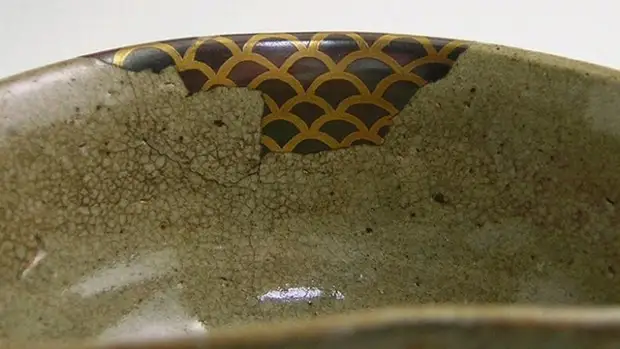
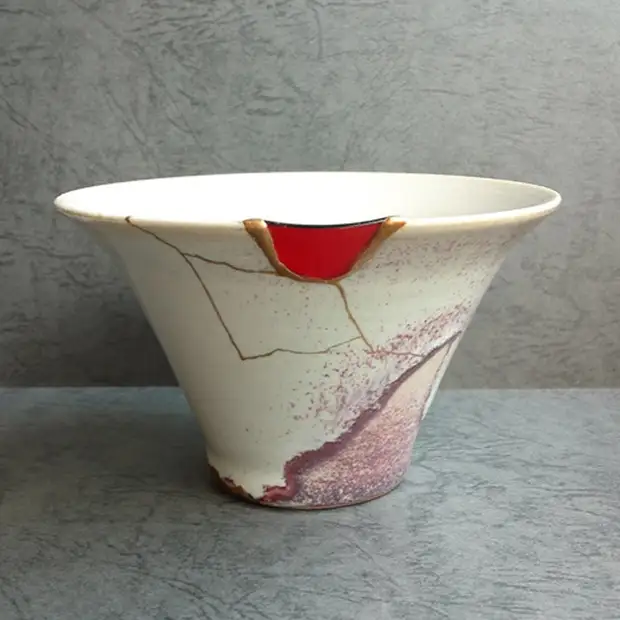
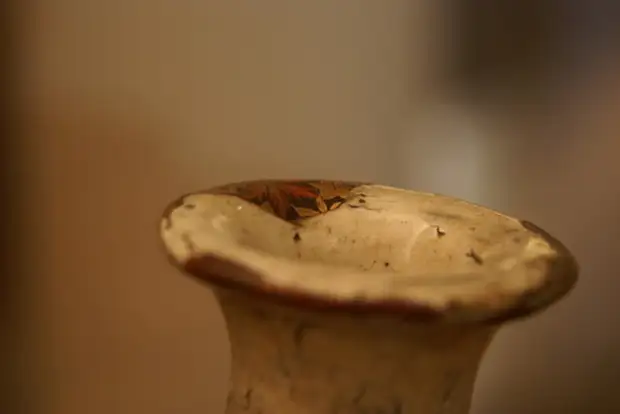
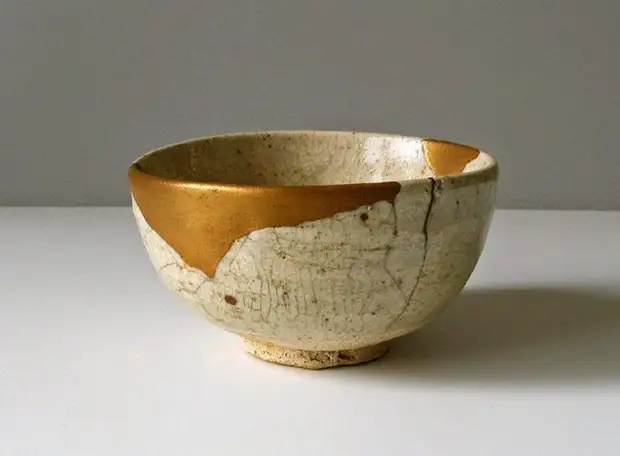
- Docking - replacing the missing parts by others suitable in form, but not necessarily on texture and color.
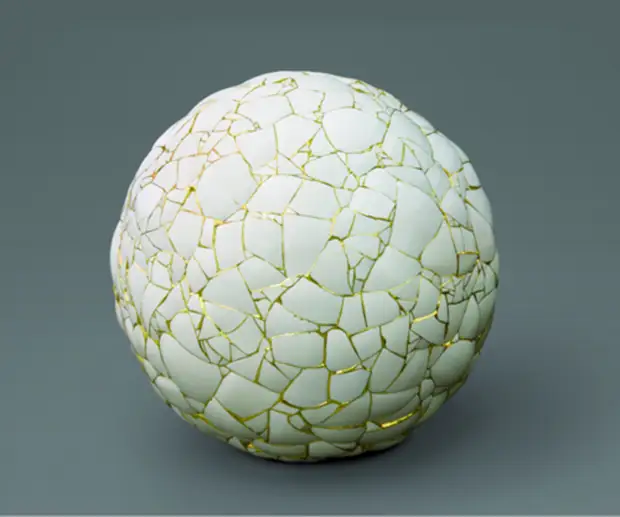
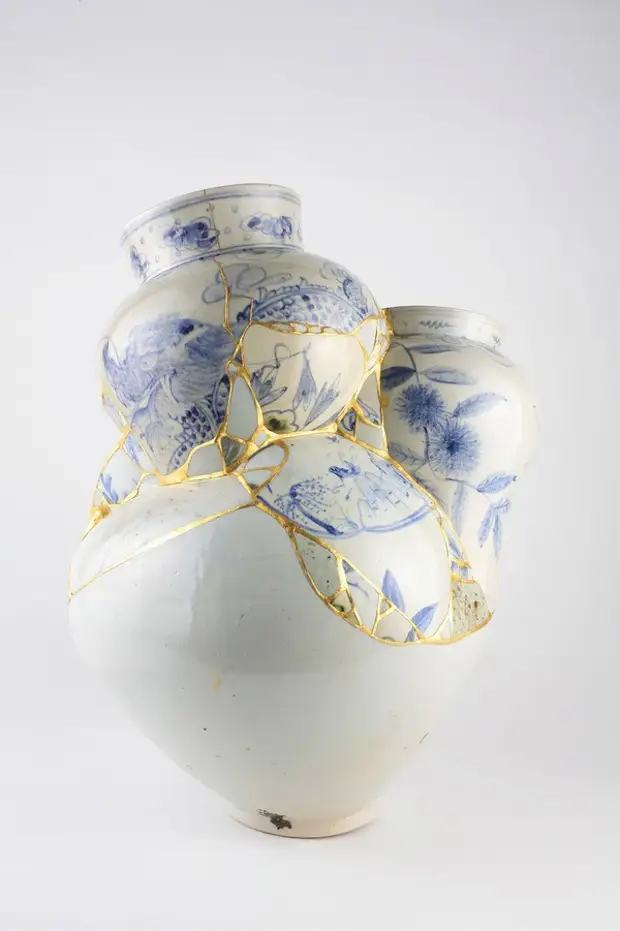
Step 1: Audine washes, pieces are collected together with the help of tape, tape, plasticine, etc. In order to understand how the Avudine looked like, take into account possible residual deformations.
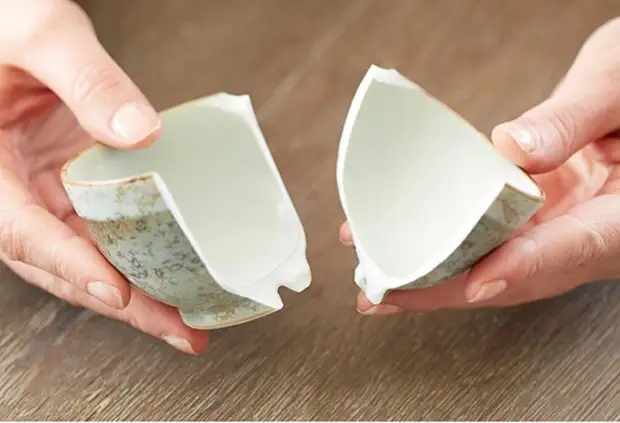
Step 2: Made "Base". It consists of flour, water and varnish Urusi. This is such a kind of glue. This composition is applied to the surfaces glued, they are combined, fixed. The same composition is filled with deep cracks, missing parts. Drying up to the month.
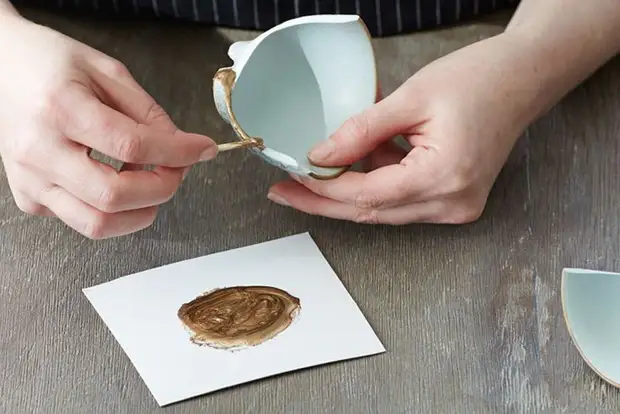
Stage 3: Primary cleaning. The excess "base" is deleted, the seams are cleaned, it is checked for holes, skips. If these are, it starts all from paragraph number 2. If everything is great, then everything is pretty sandpaper from large to small.
Stage 4: All seams pass the thin layer of varnish, as the base has a porous texture. The product is placed in a drawer for drying. Drying up to the week.
Stage 5: Cleaning again. Stacker from a small one.
Stage 6: Another layer of varnish on the seams. Drying again (layers of varnish can overlap infinitely until the result satisfies me).
Step 7: And again cleaning. This time the final.
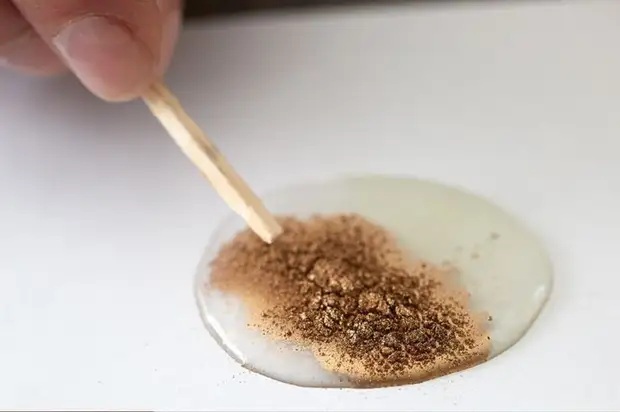
Step 8: A thin layer of varnish on the seam is applied and covered with metal powder from above. Sudine goes to the final drying.
Stage 9: The dishes are carefully laundered from powder residues.
